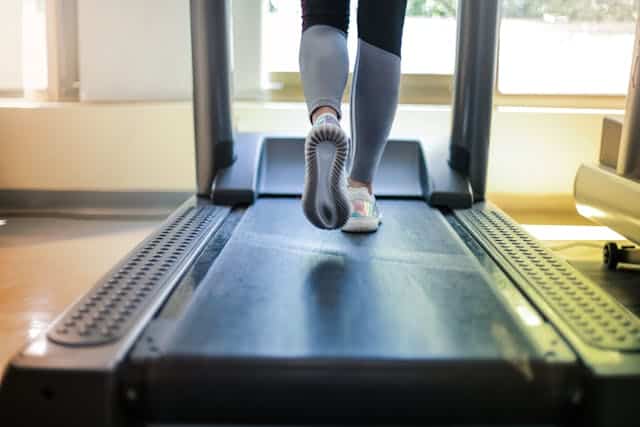
Why are adults sedentary?
November 17, 2017
Are toddlers meeting the New Canadian 24-Hour Movement Guidelines for the Early Years?
December 12, 2017Today’s article comes from Dr Rachel Colley, a researcher in Health Analysis Division, Statistics Canada. This article was originally published on the Statcan Blog as “Ten years of measuring physical activity—What have we learned?“.
Headlines about physical activity seem to hit the news almost daily. The stories tell us that Canadians are not active enough and that they spend too much time sitting idle.
But, how do we measure physical activity among Canadians? The statistics and analysis and research behind the headlines often are based on Statistics Canada’s Canadian Health Measures Survey, particularly the survey’s accelerometer data.
The Canadian Health Measures Survey
In 2007, Statistics Canada embarked on an ambitious new survey, the Canadian Health Measures Survey (CHMS). The CHMS is unique: in addition to asking Canadians about their health, the CHMS measures it. To gauge their physical activity, participants wear an activity monitor called an “accelerometer” for seven days. The time each person spends being sedentary (screen time), lightly active (chores, light walking), or engaged in moderate-to-vigorous physical activity (sports, exercise) is then calculated.
Survey staff put a lot of work into collecting these data, from calibrating and setting up the equipment, to getting the monitors back from participants, to downloading the data and performing quality control. The effort is worthwhile; the data obtained are compelling and have helped to increase our understanding of an important health behaviour in Canadians. In fact, over 25 scientific papers have been published since 2010 by Statistics Canada and Canadian researchers using these data.
How active are Canadians?
In 2011, the first accelerometer results from the CHMS were published; they indicated that 7% of kids (1) and 15% of adults (2) were meeting current recommendations for moderate-to-vigorous physical activity (60 minutes per day for kids (3) and 150 minutes per week for adults (4)). Preschool-aged children fared better: nearly three‑quarters (73%) of 3- to 4-year-olds and half of 5-year-olds met the recommended 180 minutes per day of activity at any intensity level (5,6).
Has anything improved since the CHMS started? A recent paper indicates that there has been no change in the physical activity levels of Canadian kids in the last decade (7). However, the news is not all bad. About one-third of kids are achieving the target over the week on average, and another 25% are within 15 minutes of meeting it. How often are kids active? Half of Canadian kids get 60 minutes of activity three or more days per week while the majority get 30 minutes of activity five or more days per week.
How sedentary are we?
In 2011, Statistics Canada reported that Canadian kids are sedentary for over 8 hours per day (1) and adults for over 9.5 hours per day (2). Add this to the fact that nearly three-quarters of preschool-aged kids are getting too much screen time (5) and you get a sense of why kids are so sedentary. The Canadian Society for Exercise Physiology’s development of guidelines on sedentary behaviour to date has focused on screen time (3), but many adults are sitting while they commute to work and spend their work hours sitting at a desk—topics on which we are likely to see more research in the future.
When are we most active?
One of the cool things about accelerometers is that they are time-stamped. This means that we can figure out when Canadians are getting their activity. Canadian kids are more active on weekdays than on weekends while adults are equally active or inactive throughout the week (8).
Regardless of age, Canadians accumulate the bulk of their activity between 11 a.m. and 5 p.m., with distinct peaks observed at lunch time and after school in kids (8). The finding that kids are largely sedentary and get only 14 minutes of physical activity during the after-school period was the cover story of the 2011 Active Healthy Kids Canada Report Card on Physical Activity for Children and Youth.
Is physical activity good for health?
While this may seem obvious, building the evidence base for physical activity is a necessary part of the process to develop public health guidelines. The new Canadian 24-Hour Movement Guidelines (Canadian Society for Exercise Physiology) were informed by a broad body of research and two papers that used CHMS data were included in this evidence base.Footnote9Footnote10 These guidelines integrate recommendations on the amount of physical activity, screen time and sleep for kids in a 24-hour period. Why? Given that each day is a fixed 24 hours, these behaviours are all interrelated.
If you increase one type of activity (let’s say exercise), something else has to decrease. Does it matter whether it was sleeping, watching TV or gardening that decreased? Probably. While we can’t answer these types of questions just yet, new techniques (11) are emerging that will get us closer to getting answers. Why is this work important? CHMS data indicate that only 18% of school-aged kids meet all three recommendations (12), and another study found that the health of kids improves with each additional recommendation that is met (13).
Why use accelerometers?
Statistics Canada does ask Canadians about their physical activity in the CHMS. These data are important, but they are distinct from the information obtained from the accelerometers. Someone may report having spent one hour playing ice hockey, but the accelerometer would likely pick up only 10 to 15 minutes of intense movement. This is due in part to the limited ability of the accelerometer to pick up the “stop-and-start” nature of hockey. When we compared the accelerometer-measured activity with the parent-reported activity in the CHMS, we found that parents reported that their kids get, on average, 105 minutes of physical activity per day while the accelerometers told us that kids only got 63 minutes (9).
The hockey example above explains the gap for the most part—questionnaires capture how much time someone remembers spending on an activity while accelerometers measure actual movement. In the future, we will continue to see papers published using both types of data. The accelerometer data are great for looking at precise doses and patterns of activity, while questionnaires tell us about how, when and why Canadians are engaging in physical activity.
How can we get more active?
The CHMS findings related to physical activity in kids have contributed to a decade of failing grades in the Active Healthy Kids Canada and ParticipACTION Report Cards on Physical Activity for Children and Youth. With all the headlines out there pointing out how inactive Canadian kids are, it is natural to wonder how to increase activity levels. Research papers using CHMS data have reported that active parents have kids who are more active (14); kids who participate in organized lessons, leagues and sports have higher levels of physical activity (14); and spending time outdoors leads to more active kids (15).
Research papers based on the CHMS have also shown that adults who walk as a way to get to and from work or to run errands have higher daily step counts than those who get around by other means (16). Although parents whose kids are involved in organized activities are more active themselves (14), having very young children at home (under the age of 6) is linked to lower levels of parental physical activity (17). All those reading this who have young kids at home are likely nodding in agreement right now as they try to recall the last time they used their gym membership or walked the dog.
What does the future hold?
Statistics Canada has been a leader in developing analytical procedures (18) and methods (19), sedentary behaviour (20) and physical activity cut-points (21), and step-count targets (22). The analytical code is also available on the Healthy Active Living and Obesity Research Group website for researchers wanting to harmonize their own analyses with the CHMS. CHMS accelerometer data have opened our eyes to how much Canadians are moving. In some cases, we have discovered that Canadians are moving less than they think they are! In the future, these data will be useful for learning more about the active and sedentary parts of the daily lives of Canadians and how these may change over time. This information will help health advocates create better policies to encourage Canadians to stay active and healthy.




